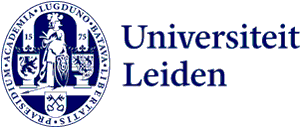Lecture
Double Lecture: Illustrated Books and Manuscripts in Early Modern Japan
- Peter Kornicki (University of Cambridge) and Alessandro Bianchi (Oxford Bodleian Libraries)
- Date
- Monday 18 September 2023
- Time
- Serie
- Leiden Lecture Series in Japanese Studies
- Address
- On campus (Lipsius 2.01) and online via Zoom
This lecture will be held via Zoom: click here for the link.
Peter Kornicki: ‘This books is banned! Censorship and the production of books in Edo-period Japan’
It was in the Edo period that Japan became a print society, a society accustomed to printing. In the early seventeenth century commercial publishers began operating in Kyoto and later in Osaka and Edo and by the end of the century there were so many books in circulation that the booksellers began printing catalogues of what was available. The Bakufu (Tokugawa government) soon noticed that some undesirable books were being printed and this was the beginning of censorship in the Edo period. How could booksellers respond to the demand for these banned books? The answer was to return to the manuscript as a means of producing books.
About Peter Kornicki
Peter Kornicki is emeritus professor of Japanese at the University of Cambridge. He is the author of The Book in Japan, Languages, Scripts and Chinese Texts in East Asia, Eavesdropping on the Emperor, and numerous other books and articles.

Alessandro Bianchi: ‘The Printed Image in Tokugawa-period Books: Production, Functions, and Forms’
During the Tokugawa period (1603-1868), Japan witnessed the emergence of a flourishing publishing business. As time progressed, printed books swiftly became a widely sought-after commercial commodity and publishers ensured that a great variety of titles were available on the market. While it was not uncommon to see publications containing decorations, diagrams, or illustrations in the early seventeenth century already, picture books and albums began to be produced in larger numbers and with remarkably better quality during the eighteenth and nineteenth centuries. The introduction of polychrome printing and the gradual refinement of xylographic techniques played a significant role in this development.
This talk explores the functions of book illustrations by looking at their uses across various types of printed publications produced during the Tokugawa period. Furthermore, it examines the illustrated book as a physical object, by discussing the various stages of material production and by analysing the most common book structures and strategies used to display images.
About Alessandro Bianchi
Alessandro Bianchi is the manager of the Bodleian Japanese Library and curator of Japanese rare books and manuscripts. After receiving his doctorate, he worked at the British Library, the Smithsonian’s National Museum of Asian Art, and taught at Haverford College. Alessandro is also a Visiting Researcher at the Art Research Centre (Ritsumeikan University).

